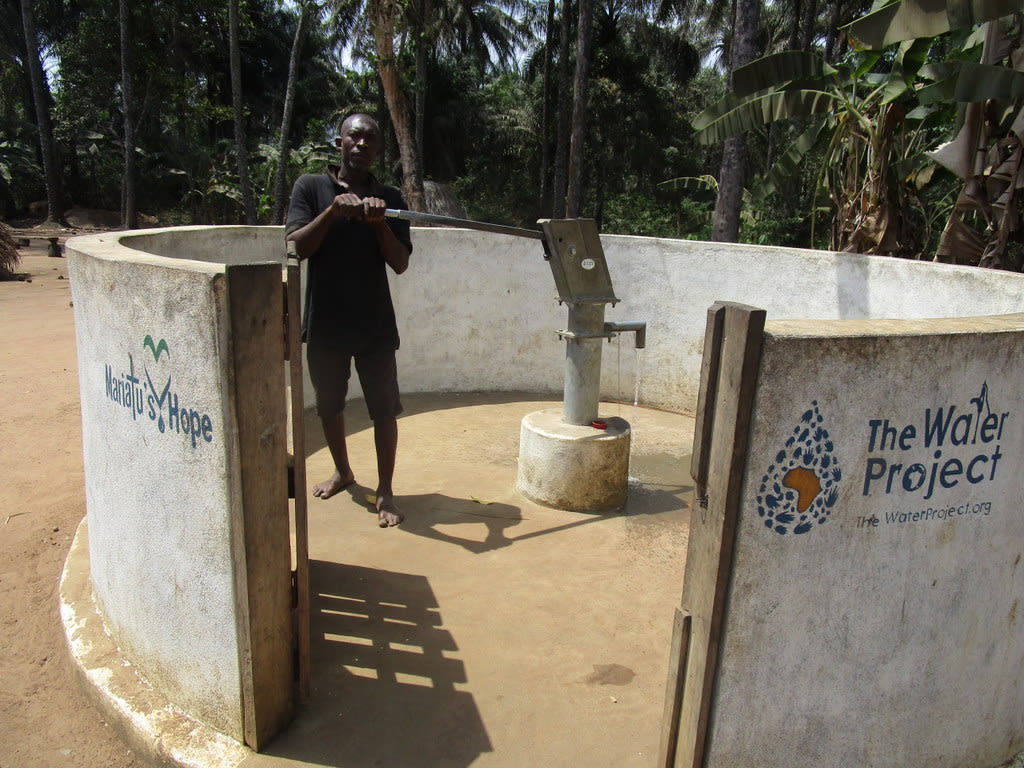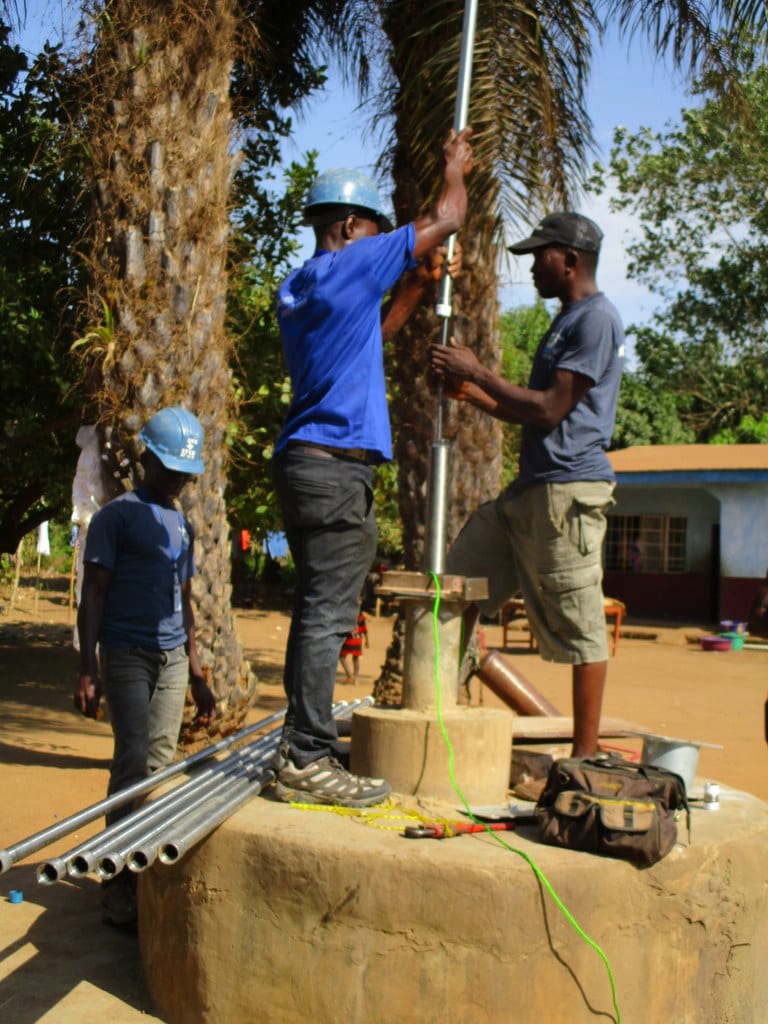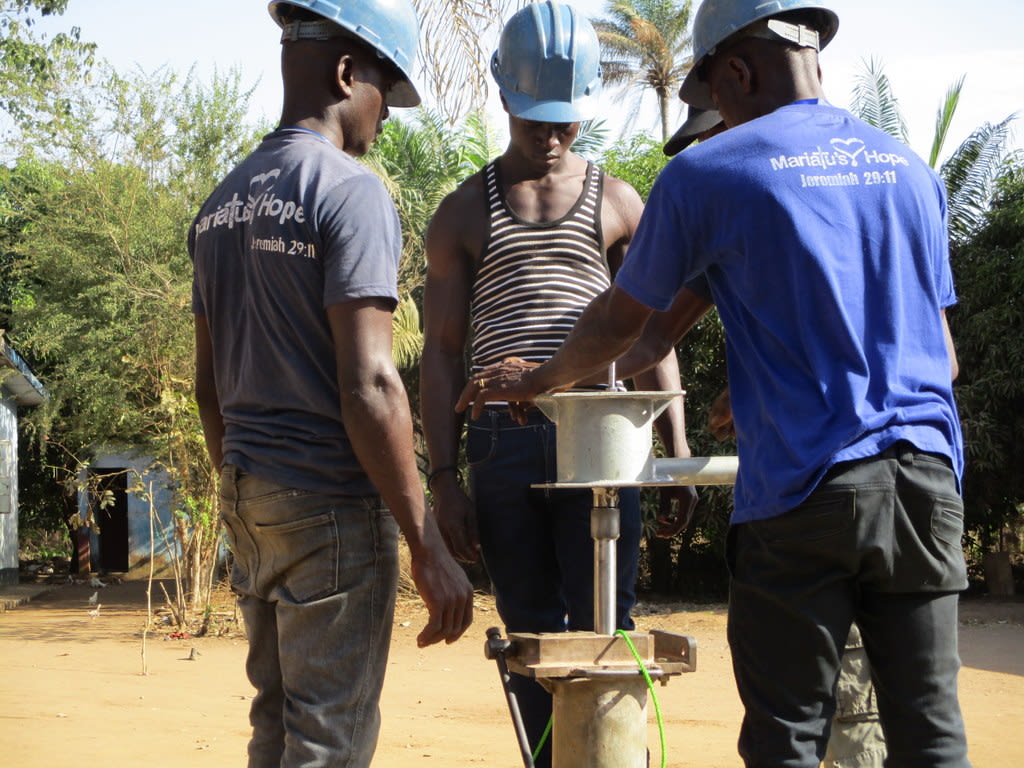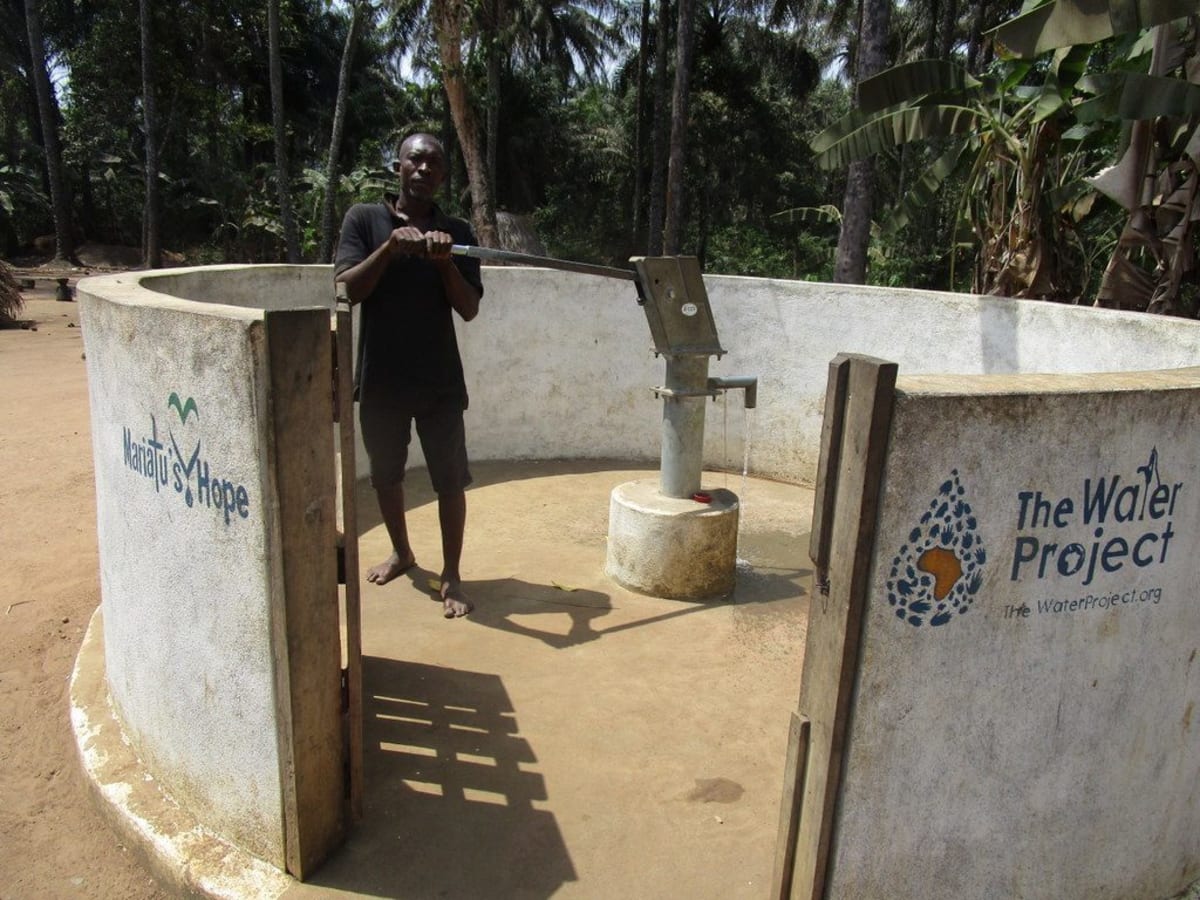Sankoya Community is in a quiet, rural area about 35 minutes away from our office via our car. Though the village is peaceful with its mud homes, Prophecy Primary School can get quite noisy with its 305 students. The school employs seven teachers. Without Prophecy Primary in Sankoya, children would have to walk extraordinary distances elsewhere.
There is no electricity or running water. There are three classrooms and a space for the headmaster's office. Each classroom is split for two classes, facing opposite directions.
In these types of communities, children are depended on heavily for doing household chores. This forces them to wake up at the wee hours of the morning to fetch water, sweep the home, etc. And when they reach school, they must sweep their classrooms that got dusty from the day before. Normally, classes get out by 2pm. At that time, most children line up to fetch water and carry it back home for cleaning their clothes. Then, they study late by candlelight.
Water Situation
There is a hand-dug well on school grounds that supports students with their cleaning, hand-washing, and drinking needs. They always carry a bucket back home at the end of the day because there isn't another clean water source in their part of Sankoya.
In fact, the entire community relies on the school's well.
Though this well does serve the school and community with clean water, it is unreliable. The dry season lasts for months at a time and negatively impacts the water table. The well is dry for the entire month of March, forcing people to walk all the way to the other side of the village to find water. One of the water sources they often use is a cloudy, murky swamp.
Clean water is so important to these people, especially these students. It's not only used to sate thirst, but to curb hunger for students who don't have lunch. Children miss class in search of water to drink.
"I do not feel good. I drink water a lot when the place is hot and also when I am hungry," Ansanatu Kamara, a 5th grader at Prophecy Primary, said.
"So when it is not available, I don't pay attention in class. I would often escape from class to find water to drink because some teachers would deny you permission to go out frequently."
Sanitation Situation
Presently, the old latrines are down and only the two open pits remain for the new pit latrines. The school has put up palm fronds around the pits to keep the kids from falling inside. Because of the lack of finished facilities, kids practice open defecation around the school.
The only latrine is in the headteacher's area. It is well-maintained: the floor is dry and the pit is covered. It is a cemented latrine and also covered with a metal roof.
There used to be a latrine behind the school that was leaning. It eventually fell down. A national NGO came in 2014 and dug two sets of pits for new latrines. However, Ebola came to the country and that NGO never returned to complete the project. When the school contacted them, they said the money was used up.
"The school's hygiene status is far from encouraging. We do keep our school compound very clean. We have, as you can see, two hand-washing stations. My major concern is that we do not have completed school toilets for these kids so all of them defecate openly. That is actually where our state of hygiene and sanitation will questioned," teacher Isatu Koroma said.
Here's what we are going to do about it:
Hygiene and Sanitation Training
There will be hygiene and sanitation training sessions offered for three days in a row.
After our visit, the hygiene and sanitation trainer decided it would be best to teach gather students, teachers, and community members together at the school. They will teach about good and bad hygiene, penning in animals, and building good tools like hand-washing stations and dish racks. Most importantly, the trainer will emphasize the importance of having and using even basic pit latrines.
A Reliable Water Well
In the past, wells were rehabilitated using large cement caissons lowered down inside of the well. A well technician goes down and digs the dirt out around the caisson until it slowly sinks down and the water comes in. This is not the best method because we constantly have to return to these wells to dig them deeper after they fill up with sand again (because this is a coastal area). By drilling down inside of the well using a manual technique, we will be able to go down much deeper. We are hoping we can drill down an additional 30 or more feet to make this a water source that lasts through all seasons.
The pump will be removed, and we either drill from the top or a man will be lowered inside with a hand auger. This hand auger will allow the team to drill several meters deeper to hit a sufficient water column that will ensure the well supplies water throughout the drier seasons. As the team drills, casing will be installed, transforming this hand-dug well into a pseudo-borehole. PVC piping will connect this lower system directly to the pump, a construction that we know will also improve the quality of water.
Once this plan is implemented, everyone within the school and surrounding community will have access to safe drinking water in both quality and quantity, even through the dry months.
This project is a part of our shared program with Mariatu’s Hope of Sierra Leone. Our team is pleased to directly share the below report (edited for clarity, as needed).

 Protected Dug Well
Protected Dug Well






























